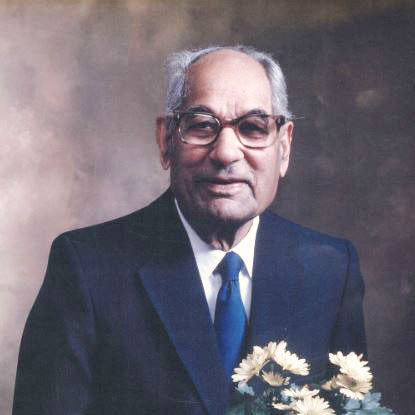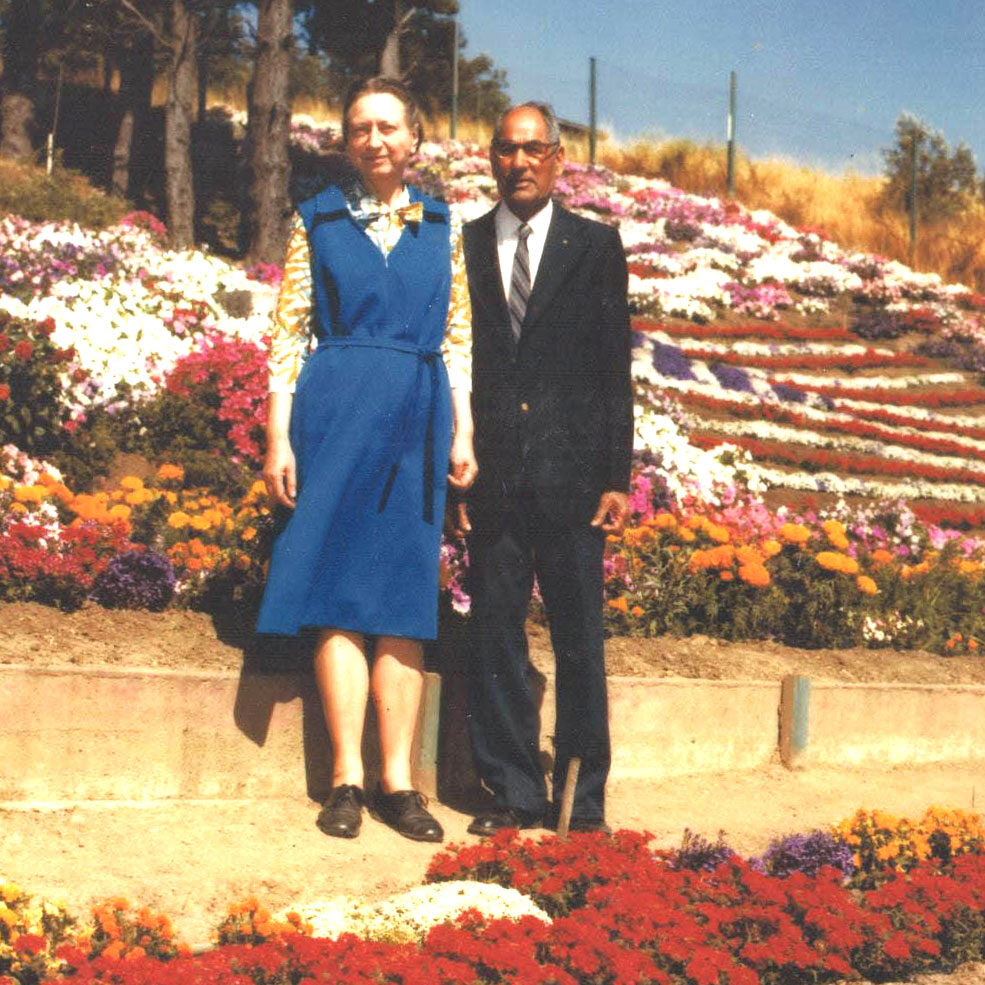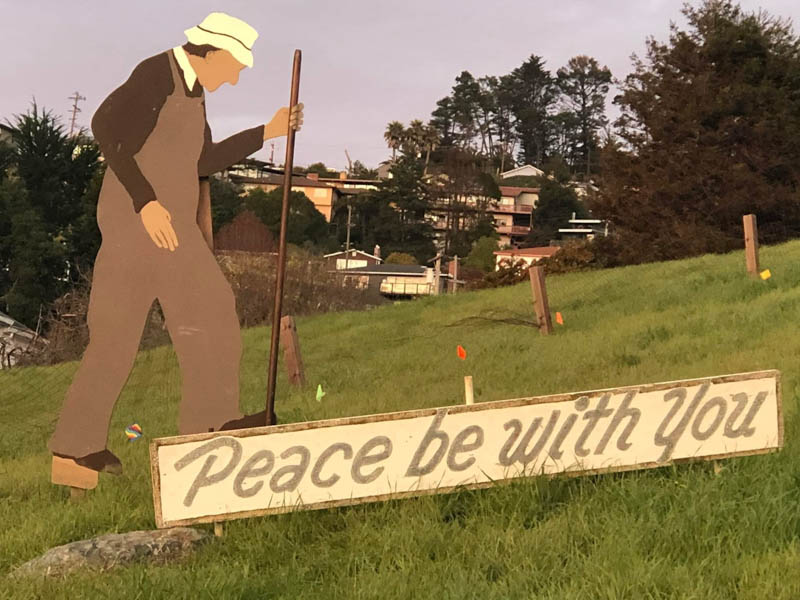The man known as Sundar Shadi was born in June 1900 as “Sundar Lamba” in the village of Chak Shadi in Punjab, India. He lived there with his parents, four brothers and a sister and attended Moslem-Sikh schools.
Mr. Shadi traveled to the United States to study pomology, the science of growing fruit. He came to Berkeley in 1921 and earned a Bachelor of Science degree in 1926, and then a Master of Science in Subtropical Agriculture in 1929.

After earning his masters, Mr. Shadi traveled back to India, but soon returned to the Bay Area. Immigration authorities reportedly advised him not to use the “Lamba” surname and to sign his name as “Sundar Sikh Shadi.” Back in Berkeley, he met Dorothy Cotelle Clark, a student from Kentucky. They married in Carson City, Nevada on September 22, 1934. (They were not able to wed in California due to a legal prohibition against “interracial marriages.”)
Sundar and Dorothy had three daughters: Zilpha Tedforda (Paganelli), Ramona Rhea (Miller) and Verna Carol Shadi. Dorothy was a professor of Spanish at UC Berkeley. Reportedly, Mr. Shadi was not able to find work in his field of study. Instead, he owned and operated a service station in Berkeley. However, he continued studies and published research papers. He became an elected member of honor societies, including Phi Sigma Biological Sciences Honor Society and the Society of Subtropical Horticulturists.

Mr. Shadi was extremely active in the community. He served as PTA president when his daughters attended El Cerrito schools, was involved in the school board and many committees, and ran student talent shows. His community involvement earned him numerous awards from the El Cerrito Chamber of Commerce, the California Parks and Recreation Society, the Rotary Club, and the Richmond Education Association. He was also recognized as an “Outstanding Immigrant to the United States from India.” Mr. Shadi was inducted to the El Cerrito Wall of Fame in 1990. A plaque and certificate hang in the El Cerrito City Hall.
Former residents of El Cerrito will recall the gorgeous flower displays Mr. Shadi planted next to his home on the Arlington, with thousands of plants that he watered by hand. He created intricate designs in his garden. One year it was a trio of “Persian carpets”, another year it was a tribute to the local Boy Scouts with a giant Boy Scouts of America emblem, and in 1976 he planted an enormous American flag with hundreds of red, white and blue flowering plants.

While the flower garden is long gone, the Shadi Holiday Display remains, delighting generations of visitors. Every December, parents bring their children to count the sheep and marvel at the angel while former residents return to recall visits during their own childhoods.
Volunteers have added one new item to the Shadi Holiday Display in recent years. It’s a life-sized plywood silhouette of Mr. Shadi featuring his signature hat and overalls. With the tremendous gift of his holiday display, Sundar Shadi lives on in the El Cerrito hills.
